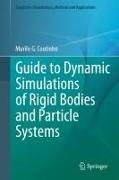Read more
This book introduces the techniques needed to produce realistic simulations and animations of particle and rigid-body systems. The text focuses on both the theoretical and practical aspects of developing and implementing physically based dynamic-simulation engines. Each chapter examines numerous algorithms, describing their design and analysis in an accessible manner, without sacrificing depth of coverage or mathematical rigor. Features: examines the problem of computing an hierarchical representation of the geometric description of each simulated object, as well as the simulated world; discusses the use of discrete and continuous collision detection to handle thin or fast-moving objects; describes the computational techniques needed for determining all impulsive and contact forces between bodies with multiple simultaneous collisions and contacts; presents techniques that can be used to dynamically simulate articulated rigid bodies; concludes each chapter with exercises.
List of contents
Dynamic Simulations.- Hierarchical Representation of 3D Polyhedra.- Particle Systems.- Rigid-Body Systems.- Articulated Rigid-Body Systems.- Useful 3D Geometric Constructions.- Numerical Solution of Ordinary Differential Equations of Motion Quaternions.- Rigid-Body Mass Properties.- Useful Time Derivatives.- Convex Decomposition of 3D Polyhedra.- Constructing Signed Distance Fields for 3D Polyhedra.- Conservative Time Advancement for Convex Objects.- The Linear-Complementarity Problem.
Report
From the reviews:
"This book offers lengthy descriptions of simulations in general, and specific kinds of systems in more depth. The chapters cover a broad range of topics. ... The book also contains nine appendices on useful mathematical tools, such as differential equations, quaternions, and the convex decomposition of polyhedra. ... The target audience is software developers interested in using dynamic simulations as part of their software." (Jeffrey Putnam, Computing Reviews, July, 2013)

